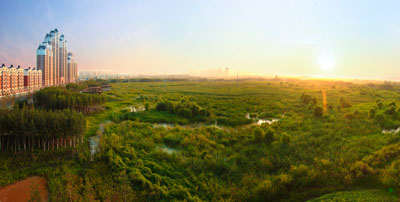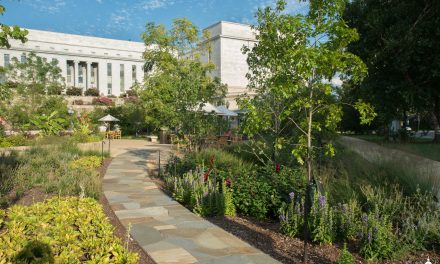
A Green Sponge for a Water-Resilient City: Qunli Stormwater Park in Haerbin City, Heilongjiang Province, China. This project won the ASLA 2012 General Design Award of Excellence. Photo credit: Turenscape and Peking University, Beijing
On Sept. 3, the American Society of Landscape Architects (ASLA) released a report detailing the many benefits of green infrastructure. The report defines green infrastructure as designed systems that harness nature to create proven benefits for communities and the environment, and include practices such as green streets, park systems, urban forests, wildlife habitat and corridors, green roofs, and green walls. These infrastructure systems help communities manage stormwater and reduce flooding, mitigate the urban heat island effect, and improve air and water quality, which underpin human and environmental health.
Researchers are amassing a body of evidence illustrating the efficacy of green infrastructure to show that systems are cost-effective, and that they provide multiple social and environmental co-benefits. The guide, part of ASLA’s series of sustainable design resource guides and toolkits, includes hundreds of research studies by leading scientists, news articles, and case studies on innovative uses of green infrastructure. Resources are organized into seven sections from large scale (region and city) to small scale (green infrastructure practice). The guide includes sections on forests and nature preserves, wildlife habitat and corridors, cities, constructed wetlands, green streets, and green roofs and walls. It also includes descriptions of the many types of green infrastructure, their quantifiable benefits, and the role of landscape architects in creating these systems. Read more.




